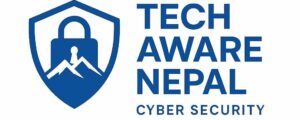
A newly discovered Linux backdoor, “Plague,” threatens Nepal’s Linux-based systems. Identified in July 2024 by Nextron Systems, this malicious Pluggable Authentication Module (PAM) enables silent credential theft and persistent SSH access, evading detection for over a year.
What is the Plague PAM Backdoor?
The Plague backdoor, first documented in July 2024, is a malicious PAM module designed to infiltrate Linux and UNIX-based systems. PAM modules are integral to managing user authentication for applications and services in these operating systems. By embedding itself within the authentication stack, Plague grants attackers covert access to systems without triggering conventional security defenses.
Key Features
- Covert Access: Uses static credentials for unauthorized SSH access.
- Stealth: Erases SSH session traces by unsetting variables like SSH_CONNECTION and redirecting HISTFILE to /dev/null.
- Obfuscation: Employs anti-debugging and string obfuscation to resist analysis.
- Persistence: Survives system updates, embedding deeply in the authentication stack.
Risks for Nepal
Nepal’s growing use of Linux in banking, telecom, and government systems, supported by initiatives like the Digital Nepal Framework, makes it vulnerable. Plague’s stealth could lead to data breaches or financial losses if undetected.
Mitigation Steps
- Audit PAM: Check /etc/pam.d/ and /lib/security for unauthorized modules.
- Monitor Systems: Use endpoint detection and file integrity monitoring.
- Secure SSH: Implement multi-factor authentication and restrict IP access.
- Assess Regularly: Conduct vulnerability scans and penetration tests.
- Train Staff: Educate on phishing and secure configuration practices.
Conclusion
The Plague PAM backdoor represents a formidable challenge to Linux system security, with significant implications for Nepal’s digital infrastructure. Its ability to silently steal credentials, bypass authentication, and evade detection makes it a critical threat to organizations relying on Linux-based systems. By adopting robust security practices, including regular audits, enhanced monitoring, and staff training, Nepalese organizations can mitigate the risks posed by Plague and similar threats. Staying vigilant and proactive is essential to safeguarding critical systems in an increasingly complex threat landscape.
For further updates on cybersecurity threats and best practices, follow reputable sources like The Hacker News and consider subscribing to threat intelligence services to stay ahead of emerging risks.

🔔 Subscribe to Tech Alerts & Updates
Never miss an important cybersecurity update in Nepal.


